#leafcutter
Explore tagged Tumblr posts
Text
Here Are My Top 10 Favourite Ants
(Updated due to public outcry and political pressure.)
No. 10 - Yellow Crazy Ants
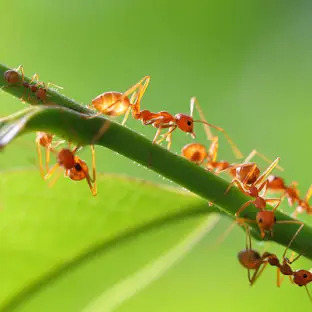
These guys are on a list of "one hundred of the world's worst invasive species" formulated by the International Union for Conservation of Nature (IUCN), having invaded ecosystems from Hawaii to the Seychelles.
But don't hate just because they are awesome at establishing themselves in a new habitat due to their aggression toward other ant species, lack of aggression toward members of their own species, efficient recruitment, and large colony size. Respect the hustle!
No. 9 - Paraponera Clavata
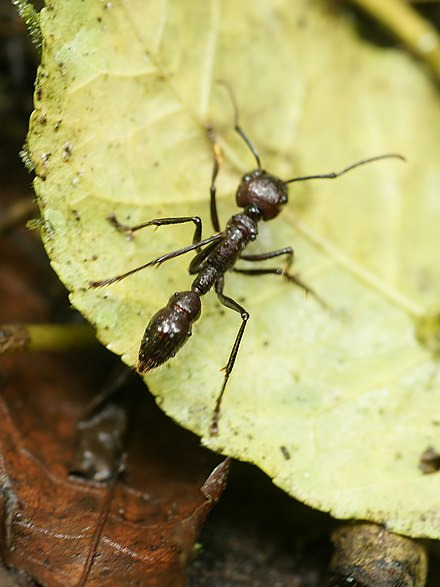
Also known as the "bullet ant," "the one wounding deeply," or "24-hour ant", referring to the full day of pain that follows being stung.
This ant's sting currently ranks the highest of all insect stings on Justin O. Schmidt's informal sting pain index, at 4.0+. Some victims compared the pain to that of being shot, (hence the nickname,) with "waves of burning, throbbing, all-consuming pain that continues unabated for up to 24 hours."
Lymphadenopathy, edema, tachycardia, and fresh blood appearing in human victim feces are common symptoms from even a single sting.
Un-fuck-with-able.
No. 8 - Honeypot Ants
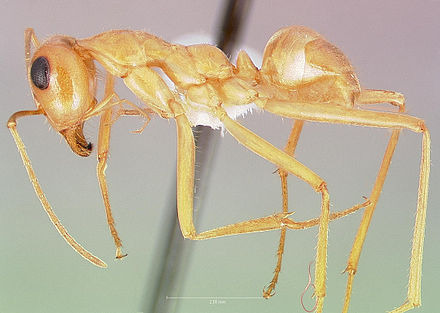
The name honeypot ant comes from the peculiar development of replete workers, whose abdomens become so swollen with food that they are used by the rest of the colony as living food storage. They are "drained" during famine, usually the wintertime, to sustain the colony, leaving them as "flaccid depletes."
Disgusting. 10/10
When a replete worker fills with food, a portion of her digestive tract swells and displaces other abdominal organs. It can expand about four to five times its normal linear dimension when they are fully engorged with food.
I can relate. I have eaten pasta in such quantities to displace my own organs many times.
No. 7 - Red Imported Fire Ants
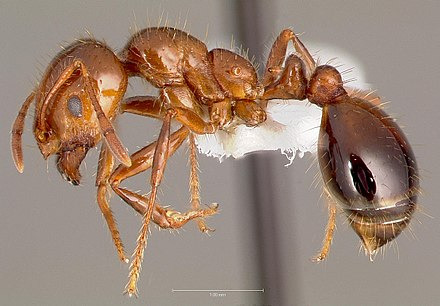
Though South American in origin, the red imported fire ant has been accidentally introduced to many other parts of the world.
More than 14 million people are stung by them in the United States annually. Most victims experience intense burning and swelling, followed by the formation of sterile pustules, which may remain for several days. Up to 6% of people may suffer from anaphylaxis. More than 80 deaths have been recorded from red imported fire ant attacks.
These ants thrive in urban areas. Nests can be built under pavements and foundations. This means not only can they damage or destroy individual structures, but red imported fire ants can have an affect on broader infrastructure, damaging land, business and property values. In agriculture, they can damage crops and machinery, and threaten pastures. They also pose a threat to animals and livestock, capable of inflicting serious injury or death, especially on young, weak, or sick animals.
With annual damages estimated in the billions of dollars, these ants are considered the second worst thing to arrive on North American soil since 1492.
No. 6 - Black Garden Ants
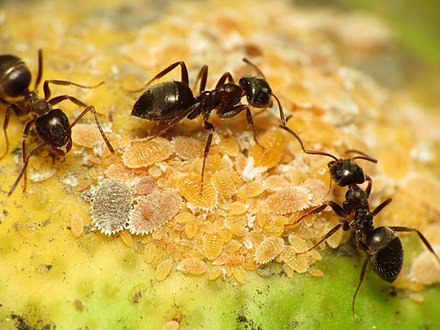
When building their colony, these ants will structure it so as to inhibit the transmission of different contagions. Different communities within the colony are segregated by a limited number of connective nodes, allowing for greater protection of vulnerable hive members, such as larvae and pupae.
A trait I could only wish other species performed so well.
No. 5 - Pharaoh Ants
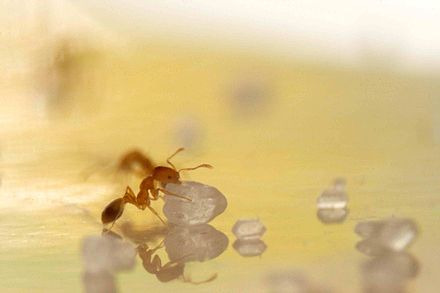
These ants utilize three types of pheromones. One is a long-lasting attractive chemical that is used to build a trail network. It remains detectable even if the ants do not use the trail for several days.
The second pheromone is also attractive, but will decay to imperceptible amounts in a matter of minutes without reapplication. This pheromone is useful in marking food sources as these are unpredictable and liable to change quickly, so not worth the longer-lasting pheremone.
The third pheromone is a repellant. If an individual finds an unprofitable area with little food or significant danger, it will release this repellant pheromone, which will warn others and cause them to look elsewhere. While positive pheromones indicating lucrative foraging sites are very common in social insects, the pharaoh ant's negative pheromone is highly unusual and pharaoh ants were the first species found to employ such a thing.
No. 4 - Argentine Ant

This species is like the Mr. Worldwide of ants. It has established itself in every continent except Antarctica (including many oceanic islands.)
It even has "supercolonies" that extend across hundreds or thousands of kilometers, first reported in California in 2000, then in Europe in 2002, Japan in 2009, and Australia in 2010.
Several subsequent studies used genetic, behavioral, and chemical analyses to show that supercolonies on separate continents actually represent a single global supercolony.
The researchers stated that the "enormous extent of this population is paralleled only by human society."
How can you not admire (and fear) the ambition and the achievement?
No. 3 - Leafcutter Ants
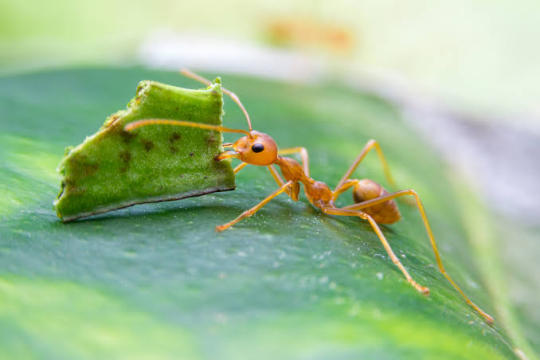
"Leafcutter ants" is a bit of an umbrella term, as it consists of over 45 ant species, but this gang is just so remarkable. Next to humans, leafcutter ants form some of the largest and most complex animal societies on Earth. They are known for their advanced agricultural practices. These ants are not merely foragers but skilled farmers, cultivating their own food by collecting specific kinds of leaf matter in order to produce specialized fungi in their nests.
No. 2 - Formica Fusca
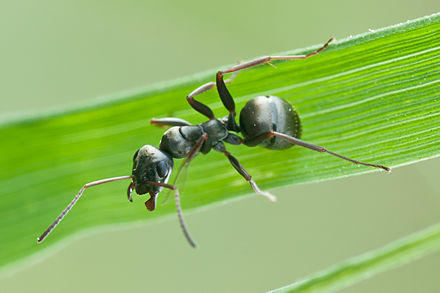
These ants, (sometimes called silky ants or dusky ants,) are fast to learn, and only a single presentation of stimulus is enough for them to form a genuine long-term memory. This formed memory is also resistant to extinction.
Ants of this species can also detect volatile organic compounds emitted by cancer cells. After a 3-trial conditioning, they can differentiate cancer cell lines from healthy ones. They can also differentiate between at least two different cancerous cell lines.
A similar ability to detect human tumours has been shown in more recent studies.
No. 1 - Weaver Ants
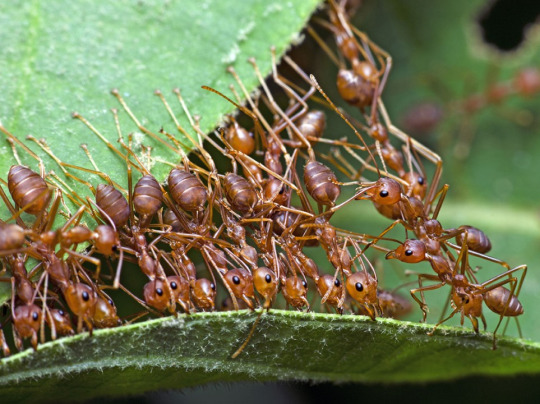
An arboreal species, (i.e. they live in trees,) weaver ants are known for their unique nest building behaviour where workers construct nests by weaving together leaves using larval silk. Colonies can be extremely large consisting of more than a hundred nests spanning numerous trees.
How they sew the leaves together is a remarkable feat of cooperation. Typically, dozens of ants will need to form a chain to first bridge a gap between two leaves, then pull them together so another team can hold them in position whilst yet more ants sew the gap together with silk. But adult ants can't make silk, so they have to use larvae to do it, picking the larvae up and using them like little pots of glue to spin a mat of silk between the two leaves. Altogether, a hundred ants might be involved in the same task. This is a pretty remarkable piece of evolution and a testament to the power of cooperation!

#ants#Myrmecology#bugblr#insectblr#bugs#insects#bug#insect#entomology#ant#antposting#invertebrates#antblr#parasites#parasitism#weaver ant#formica ant#leafcutter#bullet ant#fire ant
228 notes
·
View notes
Text
Oughhghh i love my guys so much!! I did a little animation of Leafcutter’s transformation and i’m super happy with how it turned out!!💖
Also meme redraw below😂💕
Featuring Ash, Duskdim, Leafcutter and Silverstorm

#transformers au#artists on tumblr#evren’s ocs#sketch#ashlynn#leafcutter#duskdim#silverstorm#transformers#transformer oc#my art#my animation#maccadam
38 notes
·
View notes
Text

𝐌𝐨𝐫𝐞 𝐀𝐧𝐭𝐬 ; ♡
✎ ....
🇧🇷 — Mais esboços de formigas! Desta vez, experimentando ângulos e poses diferentes. Tentei alguns designs estilizados, mas, no final, acredito que ilustrações realistas combinarão melhor com o livro.
🇺🇸 — More ant sketches! This time trying some different angles and poses. I tried some stylized designs, but in the end I believe that realistic illustrations will suit the book better.
✎ ....
★ • 𝐄𝐍𝐂𝐎𝐌𝐄𝐍𝐃𝐀𝐒 𝐀𝐁𝐄𝐑𝐓𝐀𝐒 • ★
#lauraciello#my art#acromyrmex#acromyrmex subterraneus#attini#insect xenofiction#xenofiction#leafcutter#leafcutter ants#leafcutter ant#ant#ants#insect#insects#bug#bugs#sketch#sketchbook#traditional illustration#traditional artist#traditional art#entomology#animal art
25 notes
·
View notes
Photo

Source details and larger version.
The buzz: vintage bees, some honeys, some killers.
39 notes
·
View notes
Text
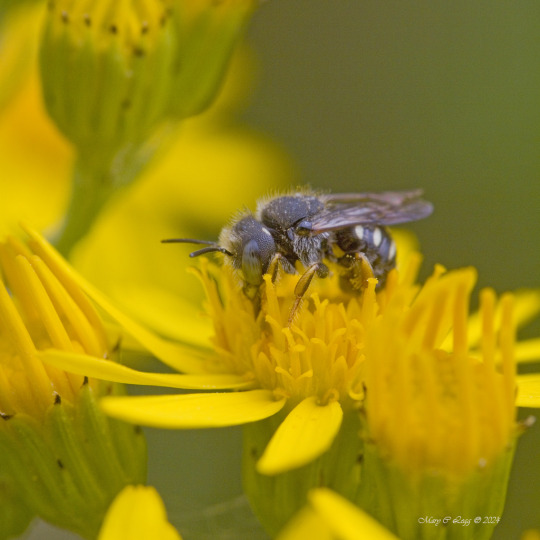
Anthidium punctatum Canon 7D EFS 60 2.8 f/7.1 1/320 iso 160 Prague, Czech Republic 7/20/2020
#Bees#Apidae#Hymenoptera#Megachile#LeafCutter#Insect#invertebrate#Macro#Grasslands#invertebrates#insects#macrophotography#insectphotography#canon
3 notes
·
View notes
Text

"Emergent Conversant Verdant Merchant"
#beeingapis#bees#comic#honeybee#humor#beekeeping#apis#beeing#bee#beecomic#leafcutter#forager#verdure#artificer
2 notes
·
View notes
Text
Strange Bedfellows: these unprecedented photos show a leafcutter bee sharing its nest with a wolfspider

I stumbled across these photos while I was looking for information about leafcutter bees, and I just wanted to share them, because they're really remarkable. The images were captured by an amateur photographer named Laurence Sanders, and they depict an unprecedented scene that has garnered the attention of both entomologists and arachnologists.

The photos show a leafcutter bee and a wolfspider living in the same burrow.
The leafcutter bee (Megachile macularis) can be seen fetching freshly-cut leaves, which she'll use to line the inner walls of her nest, while the wolfspider sits at the entryway to the burrow; as the bee approaches, the wolfspider moves aside, allowing her to enter the nest, and then she simply watches as the leaf is positioned along the inner wall.

Once the leaf is in position, the bee and the spider seem to inspect the nest together, sitting side-by-side in the entryway. The leafcutter bee seems strangely at ease in the presence of the wolfspider, which is normally a voracious predator, and the wolfspider seems equally unfazed by the fact that it shares its burrow with an enormous stinging insect.

The man who took these photographs discovered the peculiar scene by accident, and he then captured a series of images over the course of about two days (these are just a few of the photos that were taken). During that two-day period, the bee was seen entering the nest with bits of foliage dozens of times, gradually constructing the walls and brood chambers of its nest, and the spider was clearly occupying the same burrow, but they did not exhibit any signs of aggression toward one another.

The photos have been examined by various entomologists and arachnologists, and those experts seem ubiquitously surprised by the behavior that these images depict. The curator of entomology at Victoria Museum, Dr. Ken Walker, noted that this may be the very first time that this behavior has ever been documented, while Dr. Robert Raven, an arachnid expert at the Queensland Museum, described it as a "bizarre" situation.
This arrangement is completely unheard of, and the photos are truly remarkable.
Sources & More Info:
Brisbane Times: The Odd Couple: keen eye spies bee and spider bedfellows in 'world-first'
iNaturalist: Megachile macularis
#entomology#arachnology#leafcutter bee#wolfspider#symbiosis#cool animals#cool bugs#bees#spiders#nature#cute#insects#arachnids#australia#props to the photographer#laurence sanders#this is a cute couple#but their babies would be terrifying
26K notes
·
View notes
Text
1 note
·
View note
Text
leafcutter bee song (unintentional)
see the video on tiktok here
#bugs#bugblr#insects#insect#bug#entomology#found elsewhere and uploaded by me#tiktok#bee#leafcutter bee#hymenoptera#bees#solitary bees
11K notes
·
View notes
Text

just gonna take this if you dont mind
1K notes
·
View notes
Note
Can we get the other 2 minis as buggies please 🥺👉👈
from context clues im gonna assume u mean swerve and rewind lol
i got juice in me for swerve, because cicada swerve has come up before, but i have no idea what type of bug rewind would be u-u...

#leafcutter ant??? silverfish??????????#or would he be like the other cassettes where theyr like... mites or smth#idk!#doodles#cybugs#inbox#anon#cybug swerve#transformers
335 notes
·
View notes
Text





Sharing my art of Silverstorm!! She is so incredibly dear to me and is part of the transformers au i’m working on with my ocs💖💕
Syl is about 17 feet tall, and has two alt forms, one of which being a 2005 Chrysler 300c, and the other an elongated draconic form.
Silverstorm is not the brightest mech out there but she is a decent fighter for the Autobots with multiple alts, and also fairly fast. She tends to stick to the edges of a battle and remains afterwards to help any stragglers to make their way off the battlefield. In her draconic form, silverstorm can shoot a powerful blast of electricity from her mouth, but it drains her systems quickly and she almost always crashes afterwards, as such it is saved as a last resort only and she tries to avoid doing so.
Below is her ref, designed by Spot_the_jay on instagram!!

And this is a little interaction featuring Ashlynn (or Ash) who i will be sharing soon💖💕

#digital art#artists on tumblr#evren’s ocs#sketch#original character#transformers#transformer oc#silverstorm#leafcutter#ashlynn#maccadam#my art#transformers au
29 notes
·
View notes
Text

𝐀𝐜𝐫𝐨𝐦𝐲𝐫𝐦𝐞𝐱 𝐬𝐮𝐛𝐭𝐞𝐫𝐫𝐚𝐧𝐞𝐮𝐬 ; ♡
✎ ....
🇧🇷 — Acho que vou começar a mostrar alguns esboços e estudos para poder postar arte com mais frequência. Então aqui está uma formiga-cortadeira! Mais especificamente, da espécie acromyrmex subterraneus. Mais especificamente ainda, a espécie da protagonista do livro de xenoficção que estou escrevendo. 🐜🍃
🇺🇸 — I think I'll start showing some sketches and studies so I can post art more frequently. So here's a leafcutter ant! More specifically, an acromyrmex subterraneus ant. Even more specifically, the species of the protagonist from the xenofiction book I'm writing. 🐜🍃
✎ ....
★ • 𝐄𝐍𝐂𝐎𝐌𝐄𝐍𝐃𝐀𝐒 𝐀𝐁𝐄𝐑𝐓𝐀𝐒 • ★
#lauraciello#my art#illustration#traditional artist#traditional drawing#traditional illustration#traditional art#traditional sketch#ink work#ink art#ink#pen work#pen drawing#insect xenofiction#insect#insects#bug#bugs#entomology#animals#animal art#nature#biology#ant#ants#leafcutter#leafcutter ant#attini#acromyrmex#acromyrmex subterraneus
37 notes
·
View notes
Photo

Source details and larger version.
The buzz: vintage bees, some honeys, some killers.
19 notes
·
View notes
Text

Byssal Resin-Leafcutter, Trachusa byssinum Canon 400D EF 100 2.8 f/3.5 1/160 iso: 400 Srbsko 6/11/2011
#bees#Hymenoptera#leafcutter#Megachile#wildbees#insects#invertebrates#macro#Grasslands#insectphotography#canon
0 notes
Text
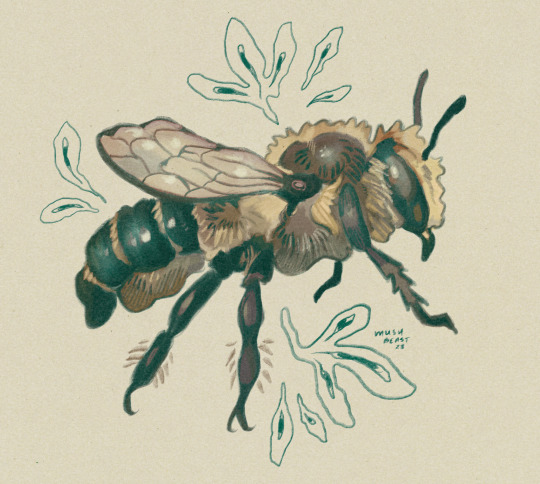
silvery leaf cutter bee
3K notes
·
View notes